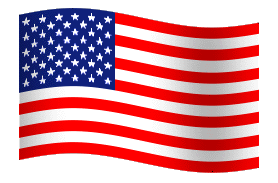
Betsy Ross and the American Flag
Flag-Folding Ceremony
New flag-folding script focuses on history, AF significance
Staff Sgt. C. Todd Lopez, Air Force Print News
Air Force leaders recently approved a new script that can be read during flag-folding ceremonies.
Though there are no official ceremonies in the Air Force that require a script to be read when a flag is folded, unofficial ceremonies such as retirements often do, said Lt. Col. Samuel Hudspath, Air Force protocol chief.
"We have had a tradition within the Air Force of individuals requesting that a flag be folded, with words, at their retirement ceremony," he said. "This new script was prepared by Air Force services to provide Air Force recognized words to be used at those times."
There is no shortage of scripts available that can be read aloud during a flag folding, but many of those scripts are religious in nature and also ascribe meaning to the individual folds put into the flag. One of the oldest of those scripts is attributed to an anonymous chaplain at the U.S. Air Force Academy.
Individuals who hear those scripts end up attributing the contents of the script to the U.S. Air Force. But the reality is that neither Congress, nor federal laws related to the flag, assign any special meaning to the individual folds. Hudspath said that was the primary motive for creating a new flag-folding script.
"Our intent was to move away from giving meaning, or appearing to give meaning, to the folds of the flag and to just speak to the importance of the flag in U.S. Air Force history," he said.
The new script, approved in July, focuses on flag history and the significance of the flag within the Air Force: "Today, our flag flies on constellations of Air Force satellites that circle our globe, and on the fin flash of our aircraft in harms way in every corner of the world. Indeed, it flies in the heart of every Airman who serves our great nation. The sun never sets on our Air Force, nor on the flag we so proudly cherish," the new script reads.
The new script is available at base protocol offices for use by anybody who wants to lend significance to a flag folding, Hudspath said. The script will not be used at retreats or funerals, as those are silent ceremonies.
"These ceremonies are meaningful to individuals, especially at their retirement," he said. "We wanted to offer a script, containing factual information that shows respect for the flag and expresses our gratitude for those individuals who protect our country, both at home and abroad."
By October, officials said the Air Force will make a video available to protocol offices and honor guard units that demonstrates a flag-folding ceremony using the new script.
Thanks to Sgt Carey Gaul for sending this to ushistory.org in January, 2006
Flag Folding Ceremony (Air Force Script)
For more than 200 years, the American flag has been the symbol of our nation's unity, as well as a source of pride and inspiration for millions of citizens.
Born on June 14, 1777, the Second Continental Congress determined that the flag of the United States be thirteen stripes, alternating between seven red and six white; and that the union be thirteen stars, white in a blue field representing a new constellation.1
Between 1777 and 1960, the shape and design of the flag evolved into the flag presented before you today. The 13 horizontal stripes represent the original 13 colonies, while the stars represent the 50 states of the Union. The colors of the flag are symbolic as well; red symbolizes hardiness and valor; white signifies purity and innocence; and blue represents vigilance, perseverance and justice.1
Traditionally, a symbol of liberty, the American flag has carried the message of freedom, and inspired Americans, both at home and abroad.
In 1814, Francis Scott Key was so moved at seeing the Stars and Stripes waving after the British shelling of Baltimore's Fort McHenry that he wrote the words to The Star Spangled Banner.3
In 1892 the flag inspired Francis Bellamy to write the "Pledge of Allegiance," our most famous flag salute and patriotic oath.3
In July 1969 the American flag was "flown" in space when Neil Armstrong planted it on the surface of the moon.3
Today, our flag flies on constellations of Air Force satellites that circle our globe, and on the fin flash of our aircraft in harms way in every corner of the world. Indeed, it flies in the heart of every Airman who serves our great Nation. The sun never sets on our US Air Force, nor on the flag we so proudly cherish.3
Since 1776 no generation of Americans has been spared the responsibility of defending freedom... Today's Airmen remain committed to preserving the freedom that others won for us, for generations to come.
By displaying the flag and giving it a distinctive fold we show respect to the flag, and express our gratitude to those individuals who fought, and continue to fight for freedom, at home and abroad. Since the dawn of the 20th century, Airmen have proudly flown the flag in every major conflict on lands and skies around the world. It is their responsibility ... our responsibility ... to continue to protect and preserve the rights, privileges and freedoms that we, as Americans, enjoy today.
The United States flag represents who we are. It stands for the freedom we all share and the pride and patriotism we feel for our country. We cherish its legacy, as a beacon of hope to one and all. Long may it wave.
(1) From a report Secretary of Congress Robert Thompson wrote to define the Seal of our Nation (1777).
(2) Text from President Woodrow Wilson's Flag Day message (1917).
(3) Based upon historical facts.


